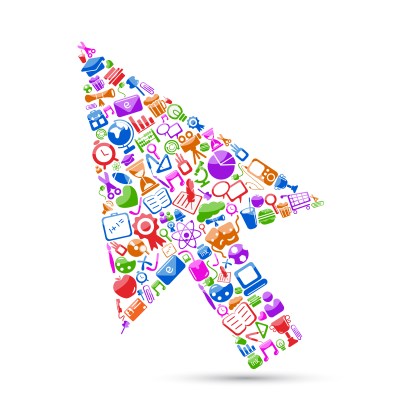Ads don’t work so well anymore.
To begin with, there are just too many of them. In a time when consumers are inundated with ads from every corner of their screens (and lives), brands and startups are finding it insanely difficult to stand out from the crowd.
Sure, you can try to get creative with your ad copy, making it controversial or relatable while remarketing the living daylights out of the user. But at the end of the day, you’re still competing in a landscape where other brands are doing the exact same thing, simultaneously crowding out the users’ screens.
Today’s more mature marketers point to content marketing as the silver bullet. But let’s be real… just how many e-books or blogs can someone stand to read in a sitting? And even if you produce really good content, it is still not easy to rank for competitive keywords. If you’re hoping that your e-book will go viral and everyone from Dharmesh Shah to Elon Musk will tweet about it, best of luck to you!
The average consumer has slowly become immune to online advertising and marketing. How do we change this? What really works in a world deaf to advertising? How do we prove to our customers that we are truly worth having their email and phone number?
If you think about it, attracting a customer is not too different from when you want to ask someone out. You don’t shout around saying how awesome you are or use run-of-the-mill pick-up lines! You make that person feel special, go the extra mile to build trust, show that you truly care… then subtly ask for their phone number!
Today’s customers know when you are not paying attention and when you are just throwing out cheesy pick-up lines.
That’s what you need to do with your customers: create memorable experiences and moments that are interactive, personalized, add value and build trust.
So, what do these experiences look like?
We surveyed top startups and Fortune 500 companies and found that most of these magic moments boil down to one of the five following digital experiences:
Calculators
When you want to buy insurance or enroll in an online school, the first thing you want to know is “what is the cost?” Calculators can help you answer such pressing questions from your customers. How much will it cost? What is the ROI? How much will it save?
In fact, millions of searches are made every month along these lines where the primary intent is to understand the cost or ROI of making a purchase.
So instead of just throwing out a generic landing page, why not answer that query directly? This is where interactive calculators come in.
Imagine how much engagement a hospital would have on a calculator along the lines of “Calculate Your Risk of Getting Heart Disease” or how much conversion an online school would get on a calculator titled “Calculate How Much You Save in Scholarships.”
Graders
Your customers always want to know more about themselves, especially what they are doing wrong. And if you can give them a “grade,” they will go to great lengths to get an A! In their pursuit of an A grade, what you get is deep engagement and data. Lots of data!
The average consumer has slowly become immune to online advertising and marketing.
I’m sure you can think of a time when you ran your website through an SEO grader or website speed grader. Once you know what needs to be done to get an A, you will go all the way!
Take HubSpot for example. They have a tool that grades the marketing friendliness of websites. By telling their customers where their inbound traffic is lagging, not only do they develop trust with prospective customers, they also collect a massive amount of data about their websites.
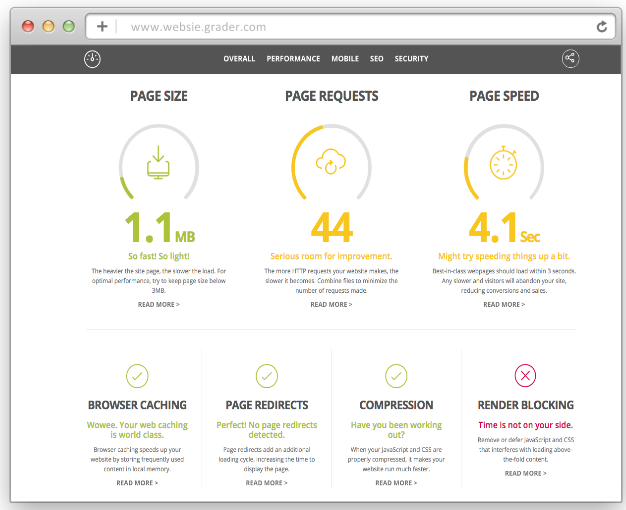
Although website graders are the most prevalent form of the implementation of graders, there are many more possibilities. Universities can create essay grader tools or IQ graders. Healthcare companies can use graders to grade human health data like renal functional ability or BMI.
Communities
Industry forums and communities represent a valuable, untapped prospecting space. Buyers almost always look for advice from peers before buying anything. Enabling them to have this discussion on your forum is extremely valuable.
If you are able to build a forum that can serve quick and well-thought-out answers, you can become the go-to place for all questions regarding your industry. And with some intelligent SEO, you can definitely milk a lot of search traffic, as many searches are in the form of questions!
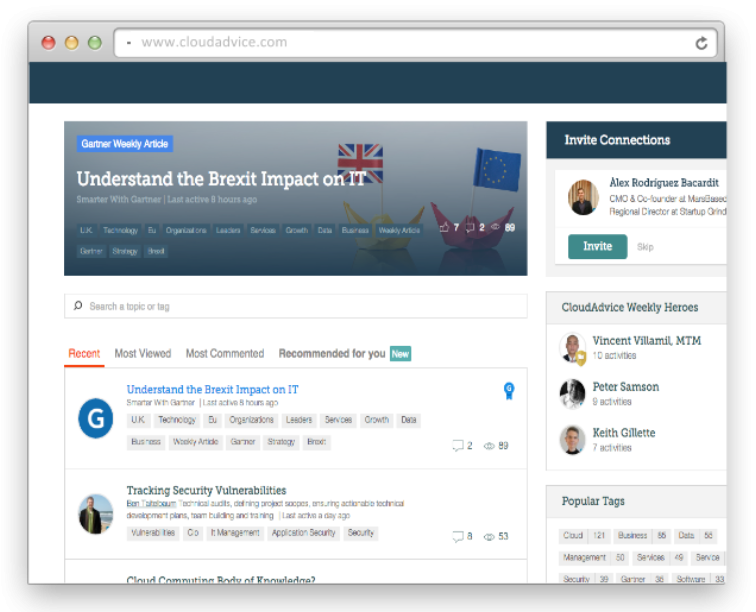
A great example is Gartner’s CloudAdvice forum for advice on all things cloud. Gartner, an IT research firm, created this peer-to-peer community for IT leaders to post their technical queries and discuss their challenges. This allows Gartner to capture hours of mind share of their prospective customers, and also sets them as an authority in the field.
Gartner also added a little gamification with a Weekly Heroes section that rewards and incentivizes users to continue posting!
Games
Gaming experiences range from loyalty programs to actual arcade-like mobile games, and thrive on a user’s urge to accomplish a goal. If used the right way, this urge can drive extremely high levels of engagement and brand immersion.
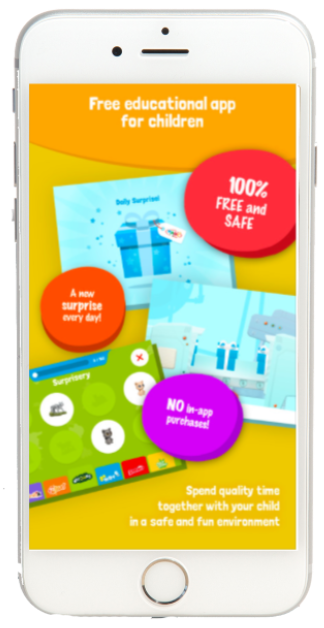
Kinder Joy, a leading chocolate brand, launched an app for 5-12-year-olds that lets them engage in an educational environment consisting of quizzes, puzzles and educational games. While enjoying their content, the children are also continuously being exposed to the Kinder Joy brand. Because the app allows parents to exercise complete control over time limits and accessibility, the app also builds a trustworthy image in front of the parents.
In this crowded space, even the best pick-up lines may not cut it!
Another example is from the labs of Volkswagen. They created a classic car racing app where you can race with Volkswagen cars. While the app itself is pretty simple, it is genius in that users get acquainted with the entire Volkswagen portfolio as they strive to unlock more expensive add-ons and models.
Augmented reality
AR and VR open a completely new box of experiences that can be created to drive engagement. One of my favorite examples is L’Oréal’s Makeup Genius app. The app lets women virtually put makeup on their faces as a way to try on different L’Oréal products. The app has reportedly been downloaded more than 20 million times.
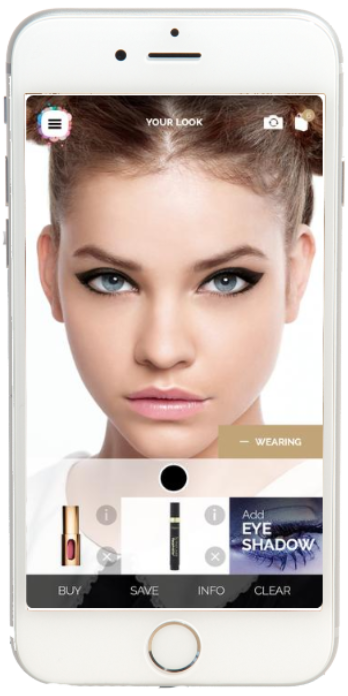
Twenty million potential customers engaging so deeply with a brand is a feat unheard of in marketing! And guess what — L’Oréal now knows exactly which eyeliner you like, what your face type is, etc., etc! Imagine how personalized they can get with their sales!
IKEA is another brand that created a successful case study with AR. Their app lets you virtually place furniture in your living spaces, which lets you virtually try millions of tables and chairs and wardrobes without leaving your home. And the beauty lies in not only IKEA collecting all the information about which color of table mats you like, but also the dimensions of your house, the number of rooms you have and whatnot!
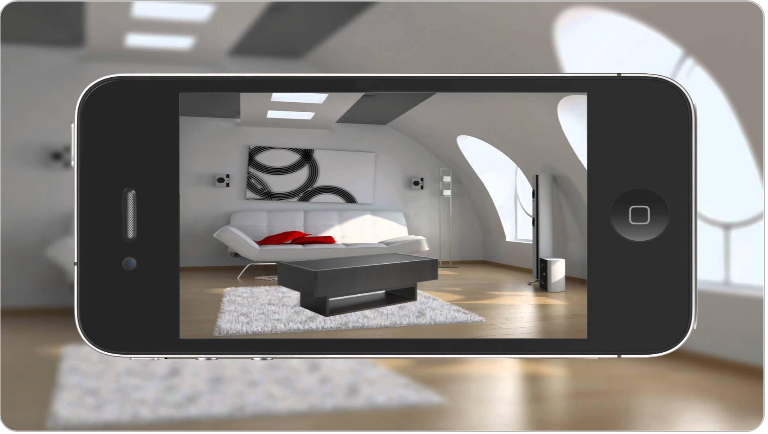
This silver bullet let IKEA get into their customers’ homes and add enormous value, while giving IKEA troves of information about its customers.
Today’s customers know when you are not paying attention and when you are just throwing out cheesy pick-up lines. In this crowded space, even the best pick-up lines may not cut it!
Hence, the race for customers will not be run on ad bidding and click baits anymore. The winners in this new game will be those that can leverage the latest in tech to add the most amount of real value instantly in an interactive and personalized way.
In light of this changing marketing landscape, marketing departments really need to start thinking about what their “digital quotient” is and how to maximize it. They need to either bring in their own technologists or get close to their IT/tech departments and get down to some serious product development!
It’s not too far off when marketing will become the new IT!
